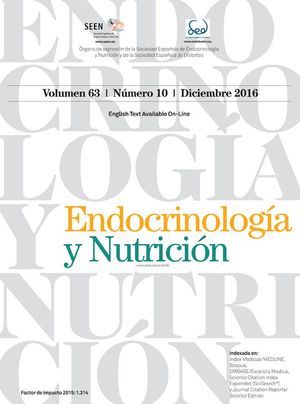In recent years, the focus of research on obesity and its management has expanded beyond traditional dietary factors to include the timing of food intake – in relation to the body's circadian rhythms – known as chrononutrition. However, chrononutrition patterns remain largely unexplored in low-medium income countries. Our study aimed to investigate the association between chrononutrition patterns and BMI.
Material and methodsUtilizing data from the virtual Survey SONAR-Brazil (n=2137,18–65 y), we defined the following chrononutrition patterns: 1. The clock time of the first, mid, and last eating events; 2. Morning and evening latencies (from wake-up time until the first eating event, and from the last eating event until bedtime); and 3. Eating window. Linear regression analyses assessed associations between chrononutrition variables and BMI. Quantile regression and restricted cubic splines were used to explore distributional correlations and association shapes.
ResultsAmong all participants, BMI increased with each additional hour of the first eating event (β=0.17; 95% CI, 0.05,0.29; P=0.005), morning latency (β=0.27; 95% CI, 0.12,0.42; P<0.001), and eating midpoint (β=0.21; 95% CI, 0.05,0.38; P=0.01) and the effect was even stronger with higher BMI percentiles. There was no effect of eating times among intermediate and late chronotypes. However, among early types, positive associations were seen between the BMI and the timing of the first eating event, morning latency, and eating midpoint, as well as a negative association with evening eating.
ConclusionsOur findings suggest that delaying the first eating event, the eating midpoint, and extending morning latency are associated with higher BMI, particularly in early chronotypes. These results highlight the importance of aligning eating patterns with chronotypes and support personalized dietary recommendations.
En los últimos años, el enfoque de la investigación sobre la obesidad y su manejo se ha ampliado más allá de los factores dietéticos tradicionales para incluir el momento de la ingesta de alimentos en relación con los ritmos circadianos del cuerpo, conocido como crononutrición. Sin embargo, los patrones de crononutrición siguen siendo en gran medida inexplorados en países de ingresos bajos y medianos. Nuestro estudio tuvo como objetivo investigar la asociación entre los comportamientos de crononutrición y el IMC.
Material y métodosUtilizando datos de la Encuesta Virtual SONAR-Brazil (n=2137, 18-65 años), definimos los siguientes comportamientos de crononutrición: 1. la hora del reloj del primer, último y punto medio de los eventos de ingesta; 2. las latencias matutina y nocturna (tiempo respectivamente, desde la hora de despertar hasta el primer evento de ingesta, y desde el último evento de ingesta hasta la hora de acostarse); y 3. la ventana de ingesta. Los análisis de regresión lineal evaluaron las asociaciones entre las variables de crononutrición y el IMC. Se utilizaron regresiones por cuantiles y splines cúbicos restringidos para explorar correlaciones de distribución y formas de asociación.
ResultadosEntre todos los participantes, el IMC aumentó con cada hora adicional del primer evento de ingesta (β=0,17; IC del 95%: 0,05-0,29; p=0,005), la latencia matutina (β=0,27; IC del 95%: 0,12-0,42; p<0,001) y el punto medio de la ingesta (β=0,21; IC del 95%: 0,05-0,38; p=0,01), siendo el efecto aún más fuerte en los percentiles más altos de IMC. No hubo efecto de los horarios de comida entre los cronotipos intermedios y tardíos. Sin embargo, entre los tipos tempranos, hubo asociaciones positivas entre el IMC y el momento del primer evento de ingesta, la latencia matutina y el punto medio de la ingesta, y una asociación negativa con la latencia vespertina.
ConclusionesNuestros hallazgos sugieren que retrasar el primer evento de ingesta, el punto medio de la ingesta y extender la latencia matutina están asociados con un mayor IMC, especialmente en los cronotipos tempranos. Estos resultados resaltan la importancia de alinear los patrones de ingesta con los cronotipos y respaldan recomendaciones dietéticas personalizadas.










